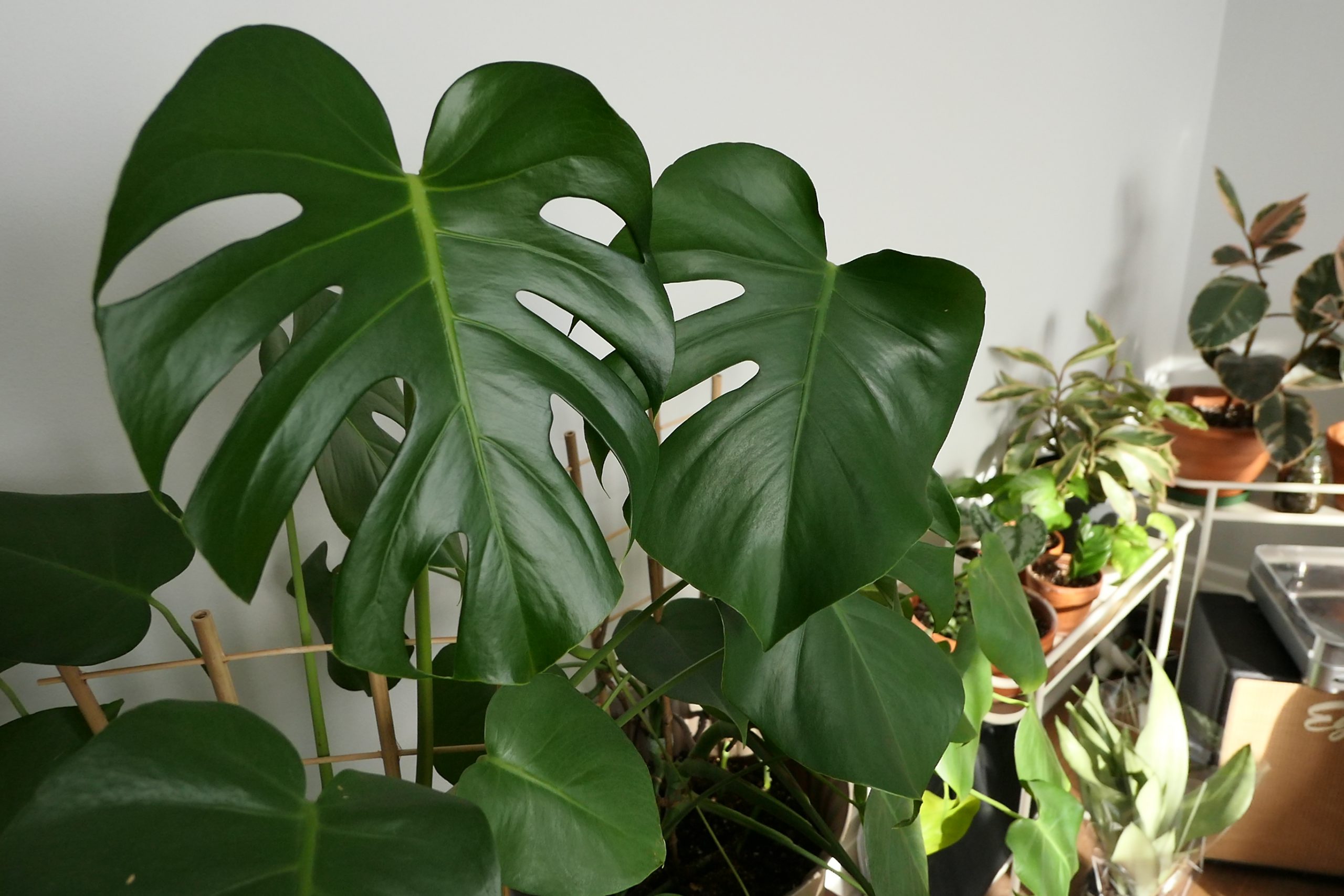You’ve gotten a new houseplant – Great! Then you get it home and start to wonder “what the heck am I supposed to do with this thing?”. I’m going to go over a few things you can do to ease your (and your plants’) anxiety a little bit. Personally I pick up new houseplants all over the place. From hardware stores, or plant swaps and a number of them came as gifts (read: abandoned by owner). No matter where you got your plant from or what sort of plant it is, here’s a good general plan on what to do when you bring a new plant into your home.
Inspect and Isolate
While new plants are always exciting to bring home there’s always the question of what’s coming along with it. I’ve made the mistake of bringing in a very cute plant only to find days later it was infested – what a nightmare! You can imagine that bringing in bugs or diseases and putting them right beside your existing plants is a recipe for disaster.
An ounce of prevention is always better than the cure, especially when the cure could mean seriously disturbing your other already established plants. Take the time to carefully look at the leaves, where the leaves meet the stems, where the stems meet the soil and the soil itself. Keep an eye out for tiny bugs, webbing, or any signs of rotting. Pests like spider mites or mealybugs are common but a real nuisance once they spread, so if you have a magnifying glass or a zoom on your camera get a real good look.
In transit leaves can get bumped and bruised and that can cause topical damage, this is usually permanent but not risky. It’s good to look for mushy or dark spots on stems and leaves, to make sure nothing is rotting. It’s also not a bad idea to get a good sniff, you might look a little crazy but it’s an easy way to tell if something is rotting in the pot. Remove and all rotting plant material immediately as it will spread.
It’s a good idea to place your new plant somewhere a little further away from your collection for a few days while you keep an eye on it to make sure no stowaways pop up in the short term.
Identify and Research
If you’ve identified any issues during your initial inspection now is also a good time to find out how serious the problem is and what remedies there are to try. If you bought your plant at a nursery often they offer a refund or return if there are major issues.
It’s a good idea to find out what type of plant you have, and once you know, use that to look up what sort of care it requires. Knowledge is power. It’s easy to assume all plants want as much sun and water as possible but that isn’t always the case. Take special note of the type of sun your houseplant prefers, how wet or dry the soil should be, and how often you need to fertilize. I also like to familiarize myself with growth habits and problems that can happen so I can be proactive in spotting them You don’t need to be an expert, but a general idea on what your houseplant needs to thrive will go a long way.
Pick a Spot and a Pot
Now that you know what type of houseplant you have and what conditions it prefers, pick out a spot for your plant. Keep in mind the direction of the sun, how far away from the window and whether there are blinds or curtains filtering the light. The idea here is that you want to find an ideal spot and not move your plant around too much. Consider that once your plant is established and settled, moving it again will mean it has to readjust.
Now is also a great time to consider the soil conditions that your plant needs. Plants that prefer to dry out can benefit from being placed in clay pots that will help wick moisture away. Avoid clay pots for plants that prefer to stay moist or you’ll find yourself watering more often – these can do better in glazed or plastic pots. In all cases make sure your plant pot has drainage or you will definitely see issues in the future.
While plenty of plants show up well potted, some could use a better soil either for the plant or for you and how often you’ll actually remember to water it.
Have Patience
Once you’re sure your new plant is pest-free, and settled into its new home, the best thing is just a little patience. A lot of people get frustrated that their new plant isn’t doing anything at all and start trying all sorts of things to get it to grow, which does more harm than good.
The journey from where it was to your home could have been very tough on your houseplant. It’s in a new place with new light, different humidity and different water. Give some time for it to adjust fully and it’ll start growing soon enough.
Water according to the needs of the plant and keep an eye out for any signs the plant is struggling (browning, rotting, etc.). In some cases plants will drop all their leaves when moved just to grow them all back to fit their new environment better, but hopefully you’ll be aware of that if you’ve done your research.
Resist the urge to disturb the roots or move the plant to new locations constantly which will just continue to stress it out. Have patience and before you know, it will be thanking you with new leaves.
